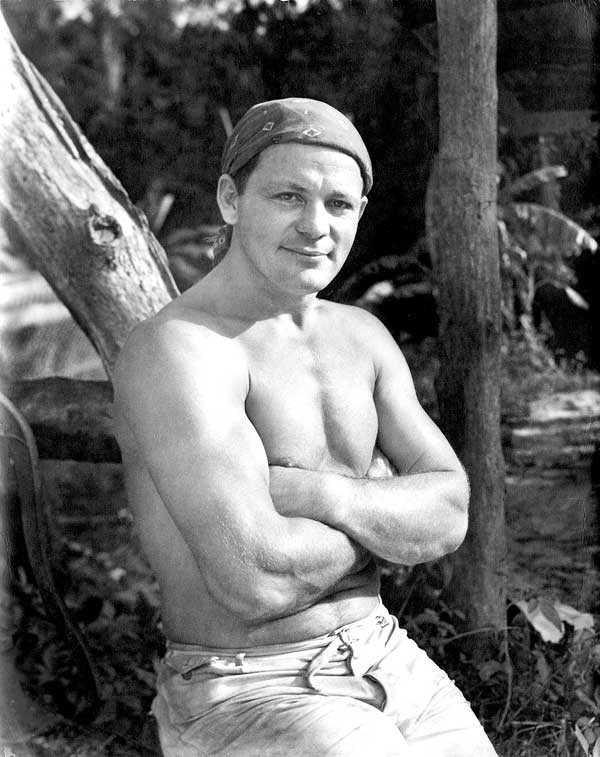The Loxahatchee River in Martin and Palm Beach counties is about eight miles long and means “river of turtles” in the Seminole language. The river, which is about 15 miles north of West Palm Beach, is one of only two Florida waterways designated a National Wild and Scenic River. Canoers and kayakers can put in at Riverbend Park and at Jonathan Dickinson State Park.
The river’s most famous human inhabitant was Vince “Trapper” Nelson (1909 – 1968), a man from New Jersey via Mexico and Texas. In Mexico, he was arrested for gun running and spent some time in a Mexican jail, an incident that probably led to his mystique and eccentric behavior in later years. After leaving the jail and with almost no money, he headed back east, earning food money along the way by gambling with other itinerants.
Arriving in South Florida, he joined a stepbrother and friend to set up a camp near Jupiter Inlet in the late 1920s. Trouble soon followed him. In 1931, his stepbrother shot and killed the friend. Trapper Nelson testified against his stepbrother, who received a 20-year sentence for the homicide. Nelson then retreated to the Loxahatchee River, where he bought 800 acres with money from his sister.
In the 1940s and 1950s, Nelson trapped, hunted, and fished along the river, earning money by selling the furs of the trapped animals. He built “Trapper Nelson’s Zoo and Jungle Gardens” along the river and filled it with wild, exotic animals that attracted many tourists for years. Personages like actor Gary Cooper and boxer Gene Tunney visited the site and watched the 6’4”, 240-pound Nelson wrestle alligators.
He married in 1940 in a failed attempt to avoid the draft during World War II. Forced to enlist, he joined the Military Police in Texas and, while training there, tore a muscle in his leg, which induced authorities to transfer him to Camp Murphy back in Florida. He divorced his wife when he discovered she was having an affair. He subscribed to the “Wall Street Journal,” which he read regularly, and continued buying more land until finally, the taxes became too prohibitive for him.
Dubbed “The Tarzan of the Loxahatchee,” he was tolerated by local health inspectors until 1960 when they shut down his zoo. Nelson then became a reclusive hermit who suffered from unspecified health problems and a paranoia about government officials. He dammed the river near his camp to keep boats away and built padlocked fences to keep visitors at a distance. The photo here (credit: M. Little/Loxahatchee River Historical Society, Jupiter, Florida) shows Trapper Nelson before his death.
He finally died in 1968 in what officials labeled a “suicide.” After his death, state officials obtained Nelson’s estate, which then became a part of Jonathan Dickinson State Park. One can still see his 1930s cabin in the state park. Rangers found over 5,000 coins buried in Nelson’s chimney, coins worth over $1,800.
So, when you visit the beautiful Loxahatchee River, think about its strangest, and most eccentric resident, one of many in our storied past.
Kevin McCarthy, the author of “Native Americans in Florida” (Pineapple Press, 1999), can be reached at kevinkadin@yahoo.com.
